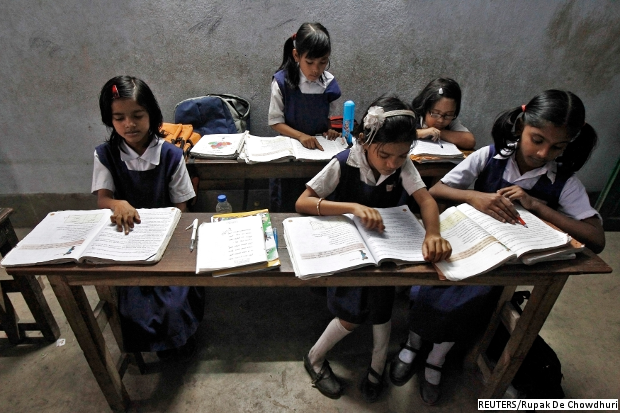Teachers Get 80% Of Education Expenditure: New Report
Up to 80% of India's public expenditure on education is spent on teachers--salaries, training and learning material, according to a new six-state report.
Yet, the quality of learning at Indian schools is falling, as IndiaSpend has reported, and India is short of teachers compared to other BRICS (Brazil, Russia, India, China, South Africa) nations, which have done far better at imparting literacy.
 Source: PAISA 2015
Source: PAISA 2015This is how India's education money is being spent, according to the PAISA 2015 Seminar (PAISA- Planning, Allocations and Expenditures, Institutions: Studies in Accountability), organised by the Accountability Initiative, a think tank (see chart, left):
Despite 80% of Rs 5,86,085 crore ($94 billion) over 10 years going towards teachers and their training, learning outcomes are still worsening, making it clear that India is experiencing a major policy failure.
Although physical infrastructure has grown, teachers play an important role, but as the case of Maharashtra indicates, if more than 90% of primary teachers fail evaluation tests, recruitment and training policies are flawed.
An Indian state's wealth is not linked to better education. Indeed, higher the per capita income, lower the public expenditure on elementary education (as a proportion of the state's GDP), according to the PAISA study.
Another finding was that in both private and public schools, high spending did not guarantee better learning, although it did appear to be a factor.
Here is a comparison of private and public schooling in five states:
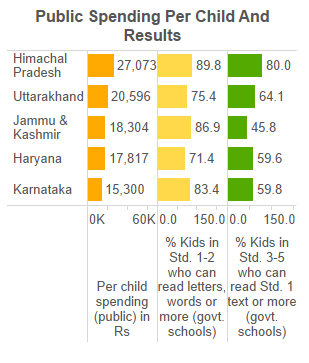
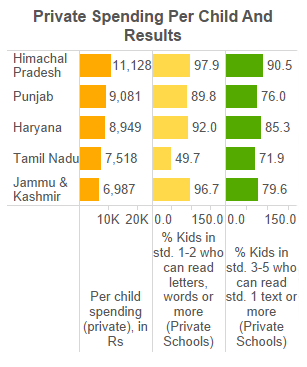
Source: PAISA 2015
The data do show that learning outcomes are better in private education, even if government expenditure per child is higher.
100% primary enrolment, 282 million illiterates
One crude fact about India’s education sector is that 282 million Indians are illiterate. Government policies ensured universal primary enrolment, but by the higher secondary level, enrolment drops to 52.2%.
This means a little more than half the population of that age will get a higher secondary education.
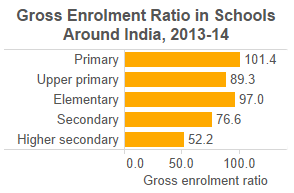 Source: DISE
Source: DISEOne indicator that can be used to look at enrolment at each level of education is the Gross enrolment ratio (GER). According to the UN Educational, Scientific and Cultural Organisation or UNESCO, GER is the total enrolment in a specific level of education, regardless of age, expressed as a percentage of the eligible official school-age population, corresponding to the same level of education in a given school-year. (If there is late or early enrolment, or repetition of a grade, total enrolment can exceed the population of the age group that officially corresponds to the level of education, leading to ratios greater than 100%.)
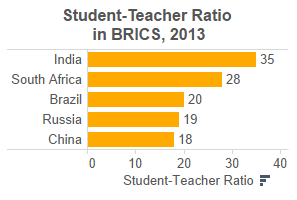
Source: World Bank
In our pre budget analysis of the education sector and government spending, we found a relation between higher spending and better literacy rates among various countries.
With a literacy rate of 77%, India lagged all the other BRICS nations, which have literacy rates above 90%. All these countries have better student-teacher ratios.
So, on the one hand, India grapples with poor quality of teachers, and on the other, has fewer teachers in comparison with countries that do a better job at education.
As Indiaspend has previously noted, policy towards better learning outcomes needs to ensure better retention rates and more teachers.
(Tewari is a policy analyst with IndiaSpend.)
“Liked this story? Indiaspend.com is a non-profit, and we depend on readers like you to drive our public-interest journalism efforts. Donate Rs 500; Rs 1,000, Rs 2,000.”


